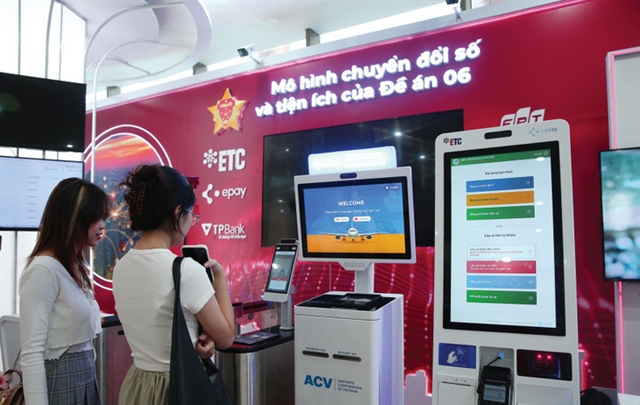 Business Beat
Business Beat


|
| Việt Nam is now servicing two large foreign bond issuances it made in dollars in 2014 and 2015 at an interest rate of 4.8 per cent and maturity of 10 years.— Photo thesaigontimes.vn |
Compiled by Thiên Lý
The Government plans to issue US dollar-denominated bonds in the domestic market to fund additional stimulus packages to foster the recovery of the economy.
A Saigon Economics Times story said it was one of the measures proposed by economists, who target an estimated US$60 billion lying idle in the economy.
They said it is the right time to issue foreign currency bonds and it would enable the Government to “kill two birds with one stone.”
Besides the prime reason that the country now needs all the resources it can muster to support the recovery of economy after the COVID-19 pandemic, they also said there are other equally important requirements.
A domestic issuance of foreign currency bonds now can help the Government restructure its foreign currency debts with more optimal tenors and maturity schedules and lower interest rates, they said.
Việt Nam is now servicing two large foreign bond issuances it made in dollars in 2014 and 2015 at an interest rate of 4.8 per cent and maturity of 10 years.
It means those bonds, totally worth $2 billion, will mature in the next three years.
The domestic issuance of foreign currency bonds would enable the Government to raise funds to pay the foreign debts when they fall due and borrow again if it wants on better terms and lower interest rates, the economists said.
Why?
Since 2015, the interest rate on dollars deposited at banks in Việt Nam has remained at zero.
The interest rates on sovereign bonds in đồng with a maturity of 10 years are now only between 2 and 2.5 per cent per year.
Thus the Government can domestically issue the dollar bonds at a much lower interest rate than the 4.8 per cent it pays for its existing foreign currency debts.
Analysts expect the US dollar bonds to carry a coupon rate of not more than 2 per cent if they are issued at this time.
Not resorting to overseas borrowing thanks to the enormous greenback holdings in the country could be important since the US is likely to hike interest rates in 2022 or 2023.
According https://finance.yahoo.com, right now foreign currency markets are showing signs of bracing for the first rise in US interest rates, and the dollar began the last quarter of 2021 near its highest level of the year.
Feasibility
While many analysts expected the foreign currency bond issuance to be successful, some expressed doubts about its feasibility.
They wondered if people are ready to invest their dollars in bonds at a time when the local and global economies remain unstable due to various reasons including the COVID-19 pandemic.
The interest rate on dollar deposits has been zero for six years but still a large amount remains in banks, indicating the greenback is a safe-haven asset like gold rather than an investment, they pointed out.
Besides, the government bond market has been meant only for institutional investors and not individuals, and so retail investors are likely to baulk at buying the dollar bonds since they have little experience, they said.
Risks
Besides the feasibility, analysts also expressed concern about some possible risks related to the issuance for dollar bonds.
As of September, the ratio of foreign currency deposits at banks was 7.65 per cent, equivalent to $42 billion, of which $6.2 billion belonged to retail customers.
If a substantial part of the $42 billion is withdrawn to buy the bonds, lending to enterprises for production and trading could be affected, with at least higher lending interests becoming a consequence, the analysts said.
Economists call it the ‘Crowding Out Effect,’ referring to government borrowing leading to substantial rises in real interest rates, absorbing the economy's lending capacity and prevent businesses from making capital investments.
A foreign exchange shortage would also put pressure on exchange rates, they said.
Nevertheless, even sceptics admit that if the Government can persuade people to use their US dollar savings to buy its bonds, the business would be really useful.
Other analysts dismissed fears of any crowding out, saying the country’s foreign currency supply would not be affected if the Government mops up dollars kept idly since it is supplemented significantly by foreign exchange coming from exports, investments and overseas remittances.
In the first 10 months of this year, foreign direct investment to Việt Nam was worth $23.74 billion, slightly higher than in the same period last year.
Last year, remittances were worth $17.2 billion, making Việt Nam the third largest destination in the East Asia and Pacific region.
According to the World Bank, overseas remittances toViệt Nam this year are likely to be $18 billion.
Trade has remained basically unaffected, and the country routinely has a marginal deficit or surplus, which does not impact the foreign reserves much.
On the demand side, the foreign exchange outgo on overseas education and medical treatment and tourism have decreased sharply due to the impacts of the pandemic in the last two years. VNS




